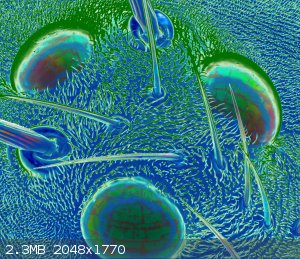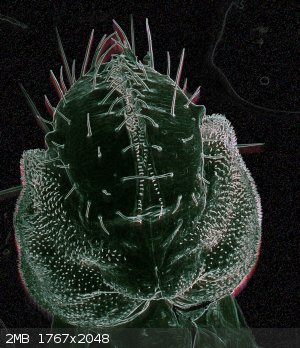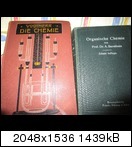 "Dorsal Ocelli"
"Dorsal Ocelli"
Insects are famous for their compound eyes; who hasn’t seen a microphotograph of the honeycombed lenses of an ant’s eye? Less well known is the
fact that many insects also have simple eyes on the tops of their heads. Pictured here are the simple eyes of a fruit fly. What do they see? Light?
Motion? Shape? What would it be like for humans to have two distinct forms of sight?
 “Are Lovecraftian Horrors Circling Your Bananas?”
“Are Lovecraftian Horrors Circling Your Bananas?”
Humans seem to have a kind of common sense, an intuition about how the world aroundthem looks and works. But because it's been built around what is
common in human experience, it can lead to counterintuitive results on small spatial scales (quantum mechanics) or at very high velocities
(relativity). Here's a less extreme example: this is the mouth of a fruit fly. Is this what you'd naturally associate with your household insect
friends?







 which you, being a lucky bastard in Florida,
would know nothing of right now unlike those of us who are up north.
which you, being a lucky bastard in Florida,
would know nothing of right now unlike those of us who are up north. It reduces
the evaporation of the ether product.
It reduces
the evaporation of the ether product.

 .
.






 We've been getting a lot of snow in the mid-west of Ohio.
We've been getting a lot of snow in the mid-west of Ohio.
















 Thanks for the heads up!
Thanks for the heads up!














 :
:

